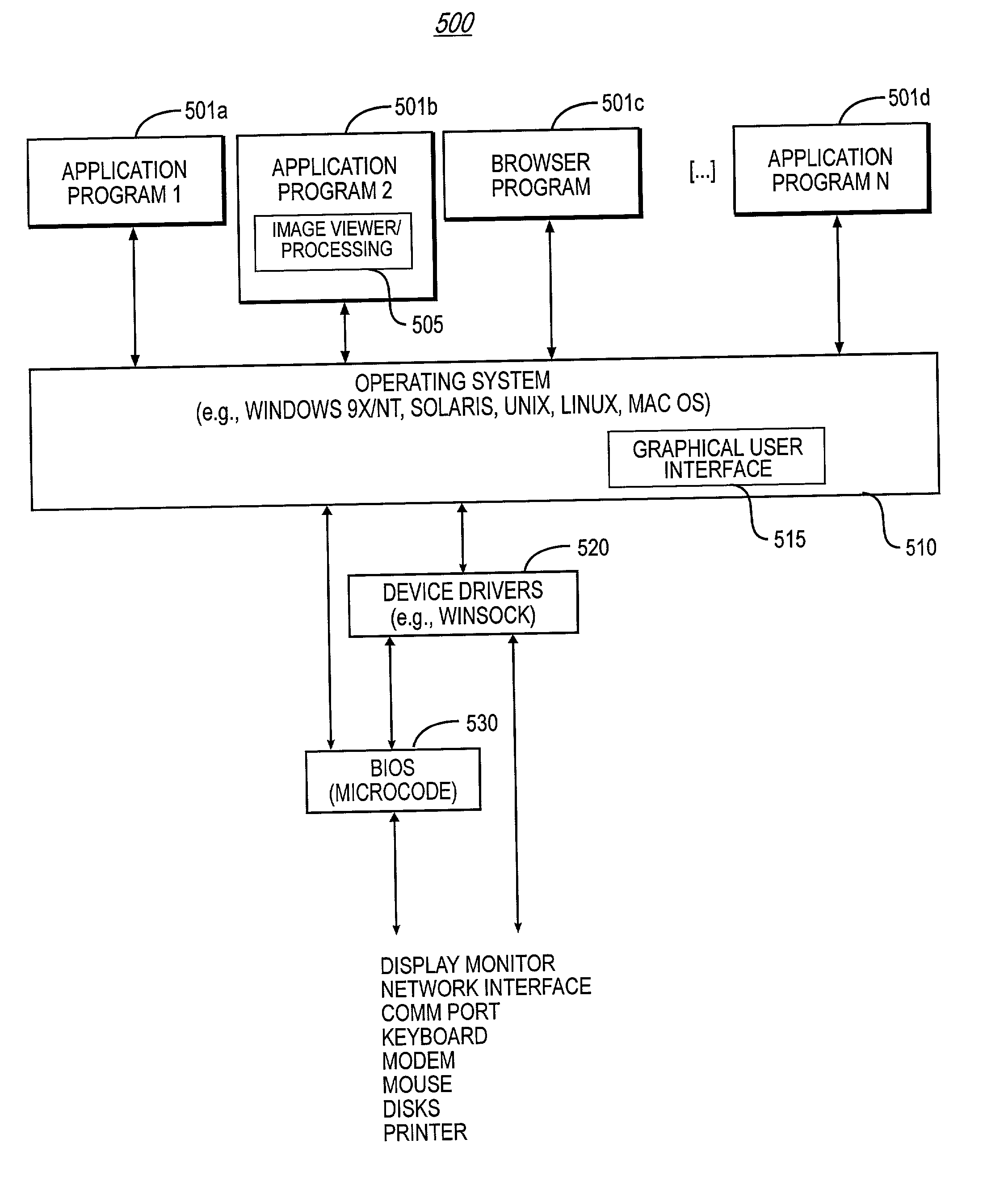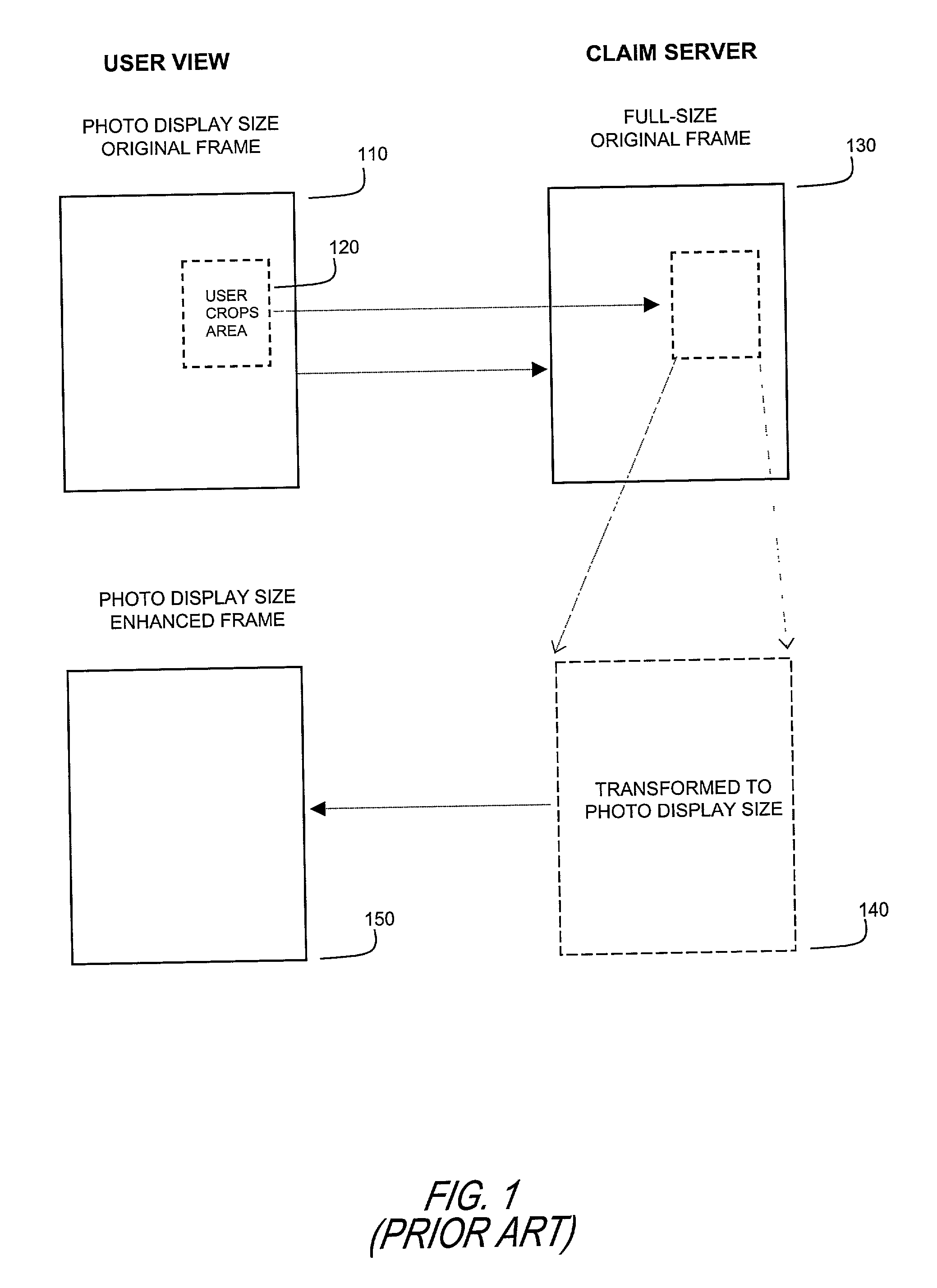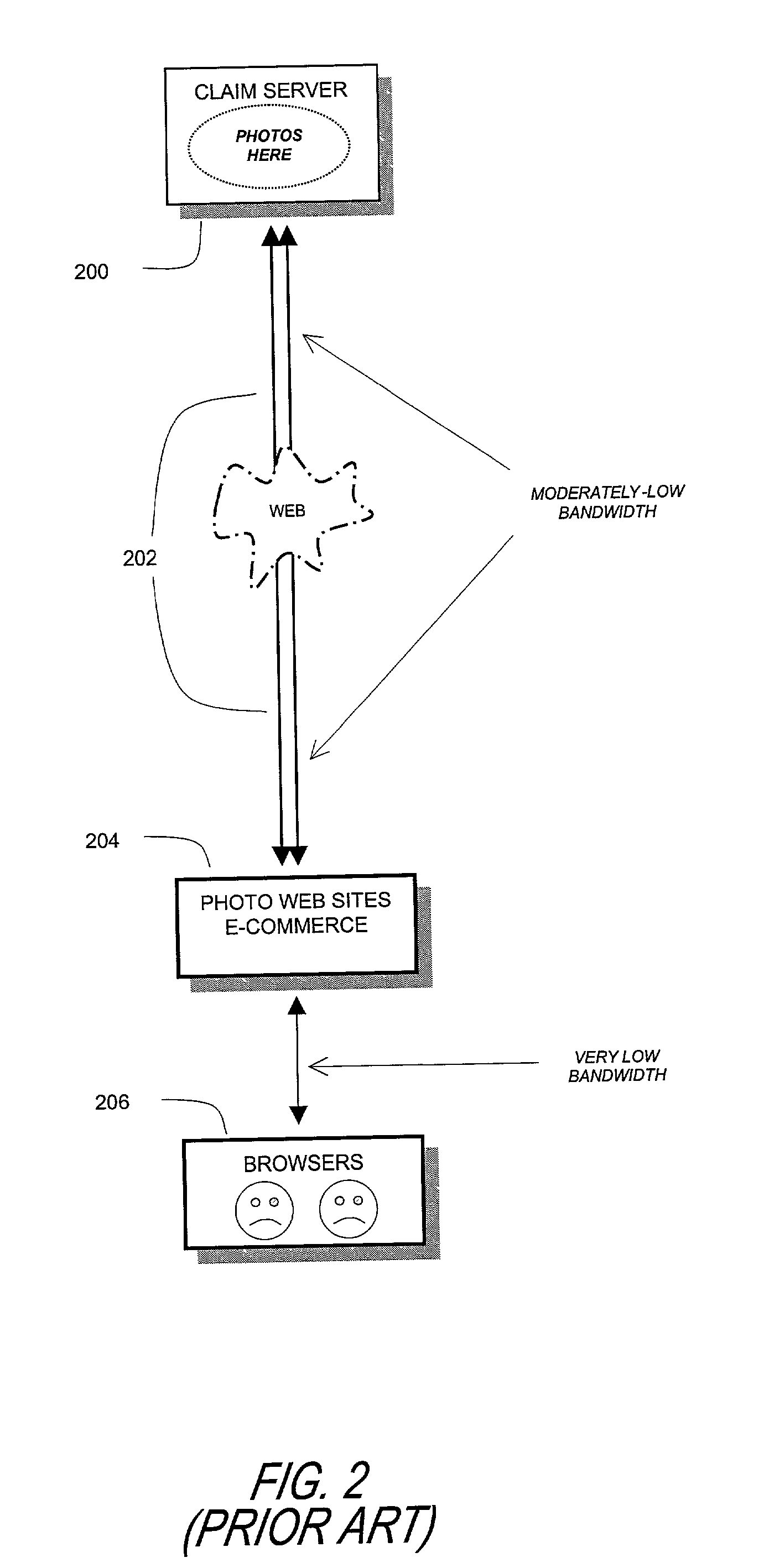Internet delivery of digitized photographs
a technology of digital photography and internet delivery, applied in the direction of digital output to print units, digitally marking record carriers, instruments, etc., can solve the problems of modest success, inconvenience for non-professional photographers, and consumers bothering to purchase the desired extra copies
- Summary
- Abstract
- Description
- Claims
- Application Information
AI Technical Summary
Problems solved by technology
Method used
Image
Examples
Embodiment Construction
[0069] The following description focuses on an embodiment of the present invention in an Internet-connected server environment, which is the currently-preferred embodiment. Additionally, DLT tape storage devices are employed for massive data transfer. However, those skilled in the art will appreciate that the present invention may be embodied in other devices capable of storing, organizing, and / or otherwise processing digital images. Further, the description will focus on implementation of portions of the invention in an Internet-connected environment including desktop and server computers, such as an IBM-compatible computer running under Microsoft.RTM. Windows 2000. The present invention, however, is not limited to any particular one application or any particular environment. Instead, those skilled in the art will find that the system and methods of the present invention may be advantageously embodied on a variety of different platforms, including Macintosh, Linux, BeOS, Solaris, U...
PUM
 Login to View More
Login to View More Abstract
Description
Claims
Application Information
 Login to View More
Login to View More - R&D
- Intellectual Property
- Life Sciences
- Materials
- Tech Scout
- Unparalleled Data Quality
- Higher Quality Content
- 60% Fewer Hallucinations
Browse by: Latest US Patents, China's latest patents, Technical Efficacy Thesaurus, Application Domain, Technology Topic, Popular Technical Reports.
© 2025 PatSnap. All rights reserved.Legal|Privacy policy|Modern Slavery Act Transparency Statement|Sitemap|About US| Contact US: help@patsnap.com



